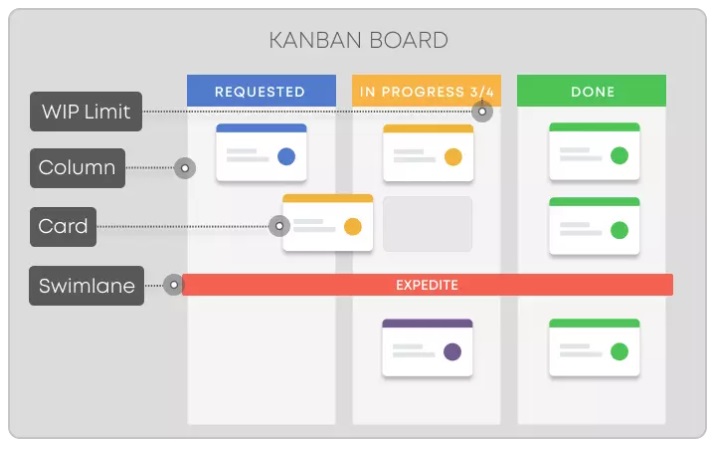How to Improve Cross-Department Collaboration in 30 Days
With the shift to remote work in recent years, cross-department collaboration has become challenging for many companies. One study showed that collaboration decreased by 37% during the pandemic.
While each department has its specialty, your departments should be able to work together toward a common goal. When done correctly, cross-department collaboration can improve productivity for everyone.
Lack of collaboration often leads to frustration among teams and a mentality of “us vs. them” between departments. This can lead to strict silos, resentment, and duplicate work.
In this guide, we are going to explore what cross-department collaboration means and how you can get your teams to work better together in as little as 30 days.
Key Takeaways
- Cross-department collaboration helps various departments work together to achieve the same goals.
- To make your collaborative efforts more successful, help your team members get to know each other.
- Mapping out your services can help identify key processes that naturally lend themselves to collaboration.
What Is Cross-Department Collaboration?
Cross-department collaboration is when employees from multiple departments work together on the same project or goal. Teamwork across departments can help generate new ideas and improve system processes.
Insert: Cross-Department Collaboration

Collaboration is a common practice in many businesses and departments. For example, sales and marketing teams often share customer information to enhance customer experience. Despite its benefits, many organizations and departments struggle with fostering effective collaboration across departments.
Why You Need Cross-Department Collaboration
According to a report from Vonage, 41% of customer service professionals say operational silos are one of the biggest barriers to creating a seamless customer experience. Working toward more cross-department collaboration can help you break down those barriers.
Improving collaboration between departments has some significant benefits:
- Employee satisfaction: Encouraging your employees to work together can help improve their job satisfaction as it shows them that their ideas and contributions are valued. More satisfied employees lead to better outcomes for you and your customers.
- Innovative ideas: New perspectives from a more diverse group can lead to new ideas and innovations. Collaborative efforts could produce more efficient processes, increase revenue, and improve customer satisfaction.
- Learning opportunities: When employees work with other departments, they will learn more about other parts of your company and how it works. This collaboration creates an environment of continual learning and growth.
30 Days to Improving Collaboration Between Departments
This step-by-step guide will have you well on your way to improving collaboration between departments in as little as 30 days.
1. Help Your Teams Get to Know Each Other
Working with people you know is significantly easier than working with strangers. The first step in cross-department collaboration is to encourage teamwork. You can host special team-building events, interdepartmental meet-and-greet events, or host other unique events that help your employees get to know each other.
People are naturally going to turn to those they know and like for help. As your departments get to know one another, collaboration should become second nature.
2. Map Out Your Services
As your associates become friendlier with each other, map out your entire departmental structure along with the services each offers. This should include both internal processes along with the services it offers your customers. We recommend starting with your customer-facing services first.
A simple way to visualize these services and any preexisting collaboration is with a Kanban board. You can go “old school” and create one using a whiteboard and sticky notes, or you can use organizational software to streamline the process.

Mapping your services can help you and your associates identify opportunities for cross-department collaboration.
3. Create Workflows that Foster Collaboration
With your organizational structure in place, create new processes that lead services from one department to another.
For example, your sales and marketing team could work together to create content that leads prospects through each stage of the buying process. From there, the sales team could work with the customer support team to find opportunities for additional sales from existing customers.
Another ideal place for collaboration is in the onboarding process. While the HR department might handle much of the initial process, they should be working closely with all departments to ensure new hires get the training they need. Senior staff should routinely give feedback on new hires to the HR team.
4. Evaluate New Processes
Having established new cross-collaboration processes, you need to closely monitor your services to ensure each department is still delivering quality work. If problems arise, make necessary changes to smooth out the issues.
As your teams gain more experience in collaborating with each other, your processes will likely evolve as your employees discover new and better ways to achieve their goals.
5. Celebrate Your Success
While your initial collaborative efforts might come with a few bumps, you should see some success, too. When that happens, recognize and celebrate it. Highlight the key players and share their achievements through company-wide communication or even special events.
This will help build support for your new programs and improve employee morale.
Additional Cross-Collaboration Tips
Here are a few additional tips to help make your cross-collaboration as successful as possible.
- Specify collaboration goals: Your departments need to know what they are working toward. Do you want to increase revenue? Improve conversion rates? Enhance the customer journey? Clearly define your goals and expectations at the start.
- Hold regular meetings: Your teams can’t work together if they don’t talk to each other. Schedule routine cross-collaboration meetings, whether in person or virtual, to ensure all team members have the same objectives and understand your expectations.
- Use the same digital tools: A major roadblock to collaboration is when every department has its own digital tools. While there may be some instances where a department needs a specialized program, streamline your digital tools as much as possible.
This TEDx Talk explores even more ways to improve collaboration:
Televerde Understands Cross Collaboration
At Televerde, we use cross-department collaboration every day. Our teams work across multiple departments to achieve goals for our customers. If your business is struggling with cross-collaboration, a new partnership with Televerde may be the solution.
We offer innovative solutions for every stage of the customer journey, including marketing, sales, and the customer journey. We also understand the interplay between each of these groups and work hard to make the transition between each department as seamless as possible.
Are you ready to improve communication and collaboration between your departments? Contact Televerde today to learn how we can help you.


